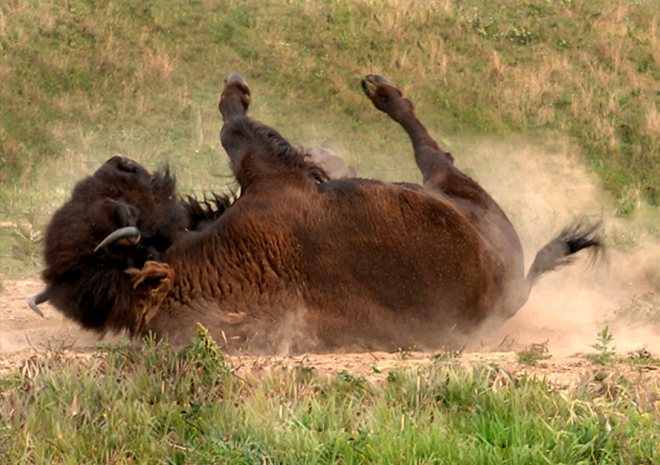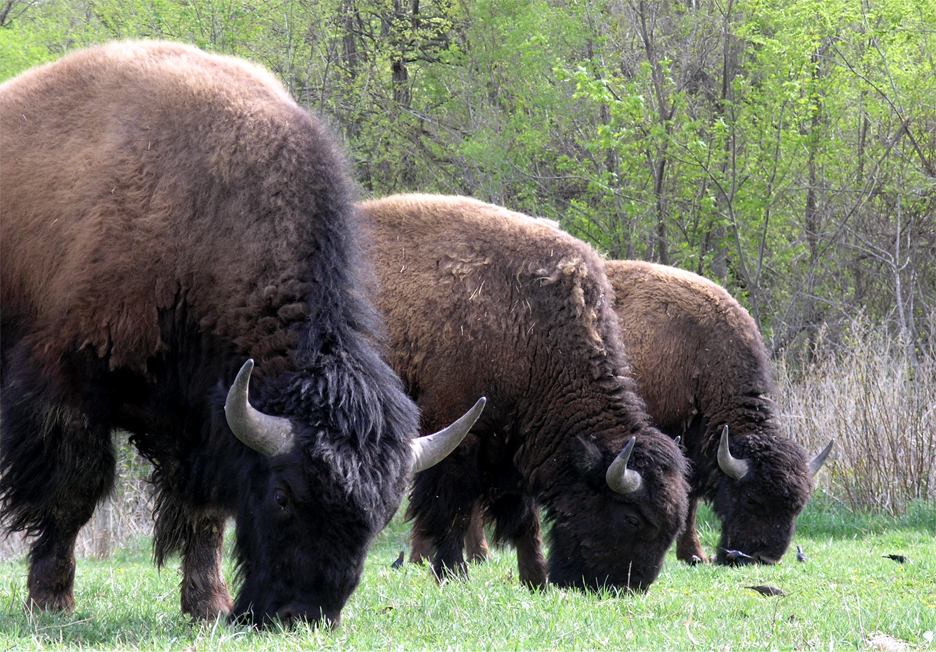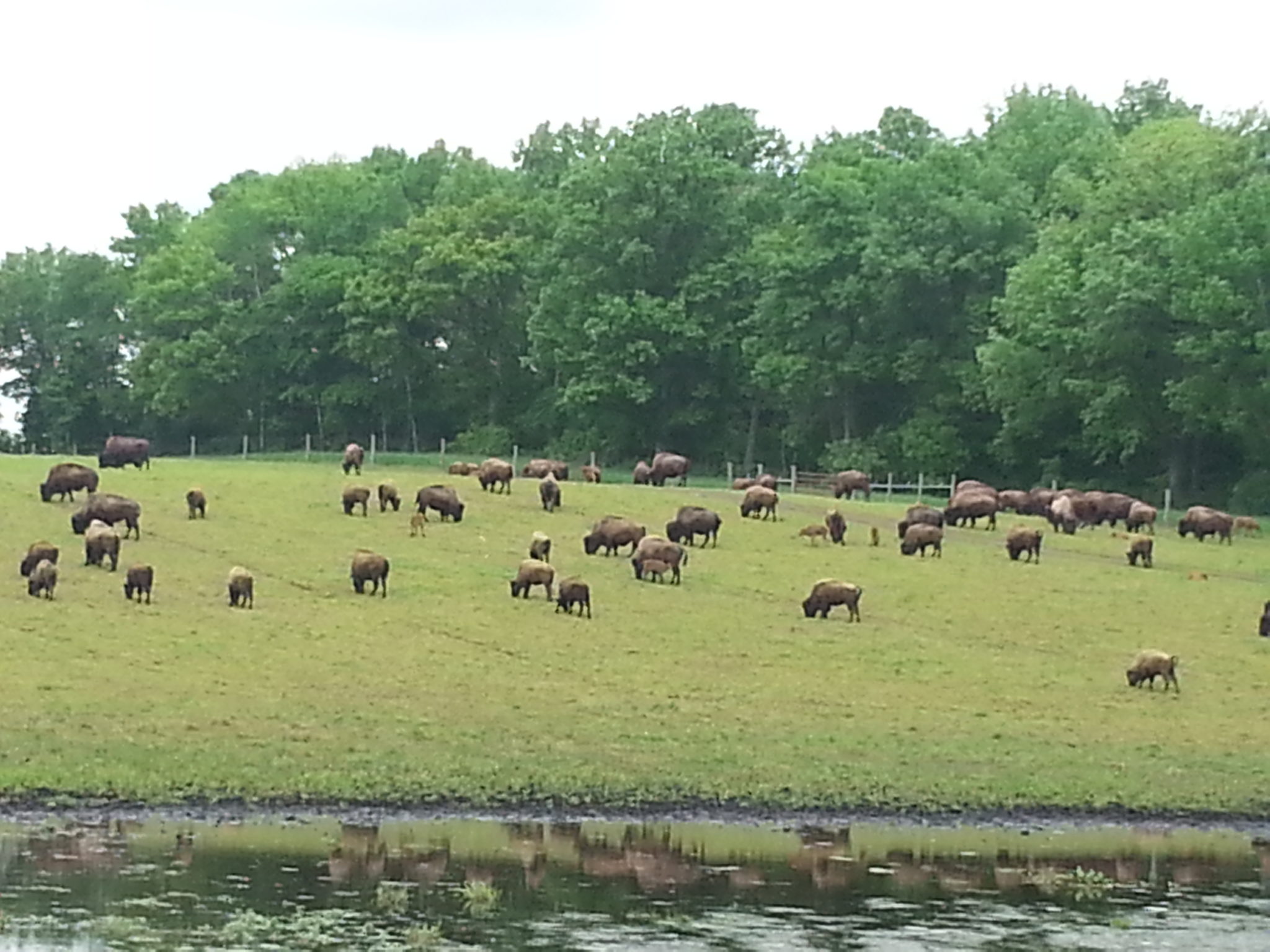


As the national mammal of the United States, bison have a unique and telling history that has shaped the today’s industry. We talked with Steve of Grazing Acres and Gail of Rockie Hill Bison Farm to get a picture of present day bison farming in Minnesota.
American bison have roamed the Midwest plains for more than 4,000 years. Like cows, these large animals are ruminants, meaning they access nutrients from plants by fermenting it in their stomach before digestion. They eat a plant based diet largely made up of grasses found on a prairie landscape. These herbivores are the largest terrestrial animals in North America and can weigh more than 2,000 pounds.
Their large size and thick coats make bison incredibly hearty and well suited for Minnesota’s climate. Our member, Steve Schalwig with Grazing Acres in Elko New Market, noted that the tough nature of bison was one of the main reasons he started raising them. Able to live outside all year long, bison do not require any barns or shelter. Gail Griffin of Rockie Hill Bison Farm in Winona spoke to this point as well saying, “Our bison live on pasture 365.” Once a year, Gail and her husband Dave roundup the herd for health evaluations and ear tagging.
Bison’s long life spans make it easy for farmers to build up a large herd with numerous breeding females. According to Steve, “They will live twenty plus years without blinking an eye.” This longevity has enabled Steve to grow his herd to more than 200 bison on his farm of a few hundred acres. His bison eat a balanced diet of grasses, fresh vegetables, and non-GMO corn silage. Steve shared that this diverse diet makes flavorful meat and uses pastureland effectively.
Despite their hearty nature, the bison population drastically decreased following the arrival of Europeans to the Americas. Intense overhunting in pursuit of hides reduced the population to around 1,000 bison by the end of the 19th century. Prior to this collapse, there had been between 20 and 30 million bison living in North America. The small remaining population at the start of the 1900s was held largely in private herds. Today, this trend continues, as farmers around the United States are raising bison for meat and hides in response to the high demand. Steve noted the strong market for bison meat in the US saying, “you can’t raise them fast enough”.
Publicly owned herds have also grown throughout the country over the last 100 years. At Minnesota’s Blue Mounds State Park, there is a herd of more than 130 bison living freely on state park land. They work in collaboration with Minneopa State Park which has another publically owned herd. These two forms of herd regrowth, through the bison meat industry and conservation efforts, have helped bring bison back from the brink. Today there are around 500,000 bison living in North America.
Health benefits having been a driving factor in bringing back bison. Steve has seen an increasing demand for bison meat from health conscious customers looking for a high-iron, low-fat protein source. Gail spoke to the high demand for local food saying, “The demand is far exceeding the supply. All of our meat never travels from birth to plate more than 30 miles.” As demand continues to rise for lean, grass fed meats, bison herds will continue to grow with it. Though we may never see 20 to 30 million bison in the United States again, Minnesota bison farmers have the species well on its way to recovery.
Interested in bison meat?
Seven farmers are listed in the Minnesota Grown directory under bison meat. Find their meat in stores around the state, or contact farmers directly. Steve’s bison meat from Grazing Acres can be found at Valley Natural in Burnsville and Fresh and Natural in Shoreview. Find Rockie Hill Bison meat at Anacabe’s Little Kitchen, Brewskis Pub and Grill and the Lakeview Drive Inn in Winona.
Photos Courtesy of Grazing Acres and Rockie Hill Bison
